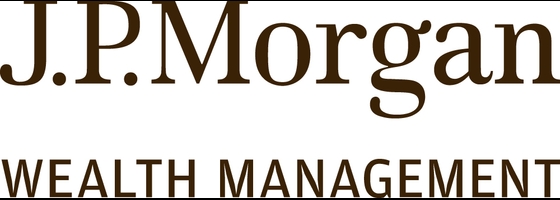Best Investment Options for Kids

Our evaluations and opinions are not influenced by our advertising relationships, but we may earn a commission from our partners’ links. This content is created by TIME Stamped, under TIME’s direction and produced in accordance with TIME’s editorial guidelines and overseen by TIME’s editorial staff. Learn more about it.
Investing for your children, especially when they are young, can pay off in the long run and help set your child up for financial success later in life. However, making the right investment choices can be daunting.
Selecting the appropriate investment accounts will depend on you and your child's goals and timeline. Knowing your options can help you make the best decisions. Here are four investing account options to consider when getting started.
A 529 plan is a tax advantaged investment account that allows you to save for your child’s education. Nearly every state offers a 529 plan, so you’re not limited to your home state in choosing one. You can use a company like Backer to comparison shop.
There are two main types of 529 plans: education savings plans and prepaid tuition plans.
There are many advantages to 529 plans, including possible state tax incentives, no annual contribution limits, tax-deferred growth on earnings, and tax-free withdrawals. The owner controls the account and can switch beneficiaries if it turns out the child doesn’t need the funds for education.
Some possible drawbacks that should be considered include fees as well as penalties if funds are not used for qualifying expenses. Also, funds can only be invested in the options offered by the plan. Although most states offer 529 plans, some are only available to residents of that state. Another consideration is that contributions over the annual gift tax limit ($18,000 in 2024) will count against your lifetime estate and gift tax exemptions.
Coverdell Education Savings Accounts (Coverdell ESAs), previously known as education IRAs, are investment accounts that can be set up to pay for the qualified education expenses of a designated beneficiary. They offer tax-free investment growth and withdrawals when used for qualifying expenses, including K-12 tuition.There are a few key differences between Coverdell ESAs and 529 plans.
Unlike 529 plans, Coverdell ESAs don't limit tuition expenses for K-12 schools to $10,000. Qualified elementary and secondary expenses include the cost of books, supplies, equipment, and tutoring at eligible schools. However, Coverdell ESAs have an income eligibility limit. For example, the limit for married joint filers is a modified adjusted gross income (MAGI) of $190,000. Contributions are also limited to $2,000 a year.
Contributions not used for education are eventually distributed to the child—unlike a 529 plan, where the funds can be returned to the account owner. All funds must be depleted from the account by the time the beneficiary reaches 30 years of age. Funds not withdrawn by that age are paid out directly to the beneficiary and will incur a penalty.
Coverdell accounts can be opened at any financial institution that is able to serve as the custodian. You can have a Coverdell ESA and a 529 plan at the same time. Unlike 529s, investment choices aren’t limited. Contributions can be invested in a variety of securities, much like an IRA.
Another tax-advantaged investment account for kids is a custodial Roth IRA. Many parents favor these accounts as an ideal start to retirement savings because they allow for decades of savings and tax-free growth. These accounts are owned by the child but are managed and controlled by an adult custodian until they reach the age of 18.
Custodial Roth IRAs have the same rules as Roth IRAs.They can be opened at any age if the child has some type of earned income. This income can come from a job that issues a W-2 or from self-employment. Annual contributions limits in 2024 are $7,000 but cannot exceed the amount of income earned in that year. For example, if the child earned $5,000 in the year, contributions are limited to that amount.
Contributions can be withdrawn at any time, but earnings will be taxed as income and incur a 10% penalty if taken before the age of 59 1/2. Qualified withdrawals taken in retirement are completely tax-free. There are some exceptions. For example, if the account has been open for at least five years, , the child can make a tax-free withdrawal of up to $10,000 for the purchase of a first home. Earnings can also be used without incurring a penalty for qualified education expenses but are taxed as income.
Uniform Gift to Minors Act (UGMA) and Uniform Transfer to Minors Act (UTMA) accounts are custodial accounts that can be opened for a child by a parent or relative. These accounts allow for the transfer of gifts in the form of cash, securities, and other assets up to gift tax limits without tax implications. Unlike 529 plans or Coverdell accounts, funds are not restricted to education expenses and can be used for anything that benefits a beneficiary.
The main difference between the two is that UGMA accounts are limited to cash and securities, while UTMA accounts can also include a variety of assets ranging from real estate to collectibles.
These accounts are controlled by the custodian until the child reaches the age of maturity, which is set by their state of residency. Many banks and financial institutions, such as Fabric by Gerber Life, make it easy for parents and guardians to direct the accounts in ways that will best benefit the child. Although managed by the custodian, the assets in the account are considered the property of the child. Unlike the other plans mentioned earlier, the beneficiary cannot be changed at any time.
Unlike other accounts, there are no income or contribution limitations, but gift and estate taxes can apply and will count toward the lifetime exclusion limits. These accounts are also looked at as an asset when applying for financial aid and may affect eligibility.
There are a range of alternative investment options for kids outside of the above-mentioned accounts. These include trust accounts and traditional brokerage accounts with investments such as stocks, bonds, mutual funds, and exchange-traded funds (ETFs). Companies such as Public and Yieldstreet allow you to build diversified portfolios.
Other alternatives include options that aren’t traditional investments. These include real estate that you can invest in via companies like RealtyMogul, cryptocurrencies with Robinhood, or art with online broker Masterworks. All three make these alternative assets available to individual investors.
There are many options available for opening and managing any of these accounts, either online or in person. Financial advisors like JP Morgan Chase Wealth Management offer complimentary consultations that can help you put together a strategy that is right for you and your child’s needs and timeline.
INVESTMENT AND INSURANCE PRODUCTS ARE: NOT A DEPOSIT • NOT FDIC INSURED • NO BANK GUARANTEE • MAY LOSE VALUE
J.P. Morgan Wealth Management is a business of JPMorgan Chase & Co., which offers investment products and services through J.P. Morgan Securities LLC (“J.P. Morgan”), a registered broker dealer and investment adviser, member FINRA and SIPC. TIME Stamped is a publisher of J.P. Morgan, (“Publisher”). The Publisher will receive compensation from J.P. Morgan if you provide contact details to speak with a J.P. Morgan representative. Compensation paid to the Publisher will be up to $500 per completed contact form. Compensation provides an incentive for the Publisher to endorse J.P. Morgan and therefore information, opinions, or referrals are subject to bias. J.P. Morgan and the Publisher are not under common ownership or otherwise related entities, and each are responsible for their own obligations. Investing involves market risk, including possible loss of principal, and there is no guarantee that investment objectives will be achieved.
If you prefer a robo advisor, consider M1 Finance, which has over 80 tailored investment portfolios to choose from.
There are many advantages to investing for kids. Not only does it help prepare them financially for their future and build a nest egg, it can also teach them valuable money lessons and help them build good habits when they are included in the process. The earlier you start, the more time investments have to earn and grow.
It’s important to know and understand your options when choosing an investment account for kids. The best option for you and your child depends on many factors, including your future goals and the timeline you are working in. Choosing one or a combination of the above options can help set your child on a path for a healthy financial future.
Investing for your kids, especially if you start when they are young, gives you time to grow and accumulate money and other assets over decades. Building wealth from a young age can help pay for a child’s education costs and help build a stable financial future for them.
Buying stocks is a great way to start building wealth for your children. But you must be able to tolerate the market risk that comes along with it.
How you should invest $1,000 or any other amount for your child depends on your plans for the money, growth goals, and timeline. If you are unsure of how to get started or the best option, seek professional guidance. You can search for advisors in your area who are registered with FINRA and the Securities and Exchange Commission (SEC) by using WiserAdvisor.
The information presented here is created by TIME Stamped and overseen by TIME editorial staff. To learn more, see our About Us page.




